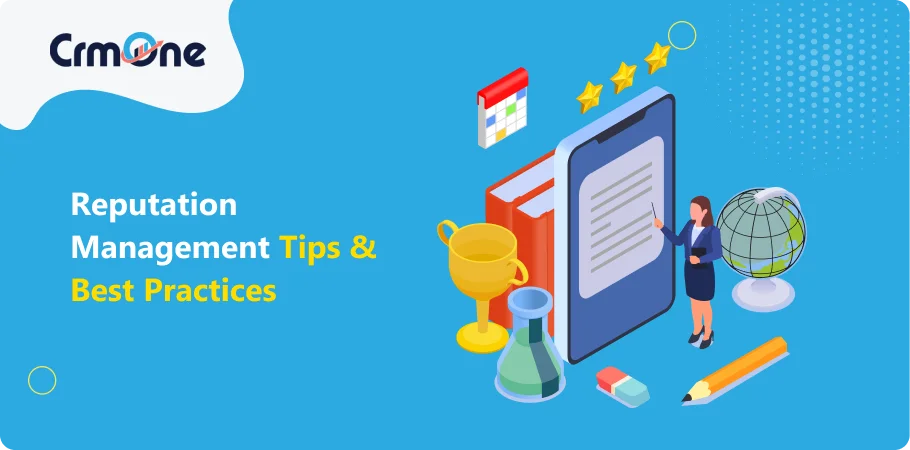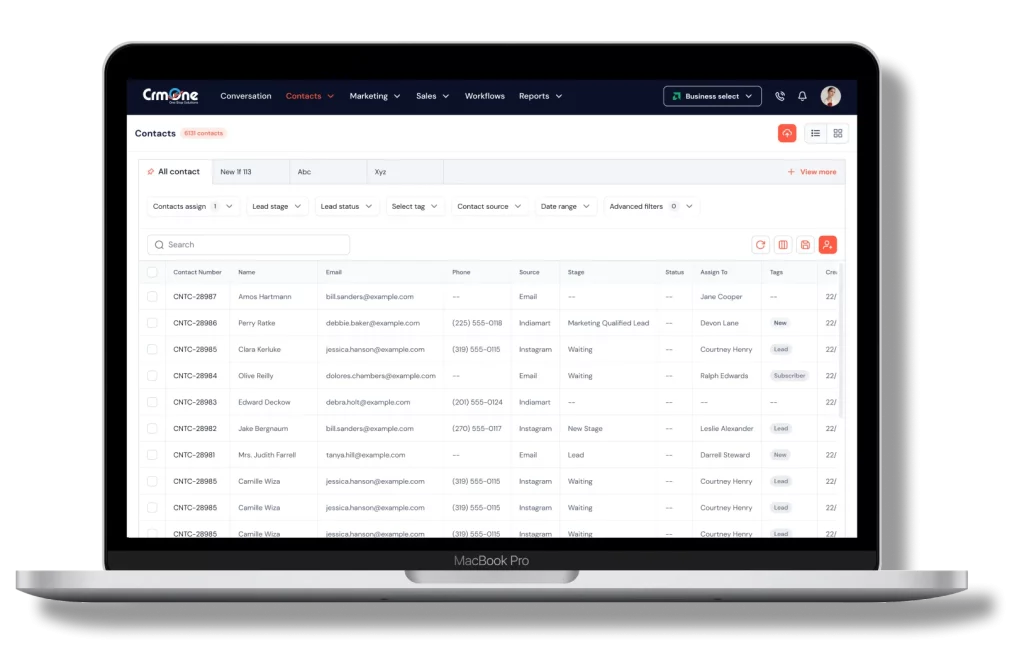Reputation management is more important than ever. A positive reputation can enhance trust and credibility. People who see good things about a business online are more likely to trust it. As a result, this trust leads to more customers and increased loyalty. Positive reviews, for instance, can increase client confidence and persuade them to select your products or services over competing ones.
On the other hand, a poor reputation can have severe negative impacts. Negative reviews can drive potential customers away. If people see bad comments or low ratings, they might think twice before engaging with your business. This can lead to a loss of sales and damage to your brand. Even a few bad reviews can significantly harm your online reputation, making it harder to attract new customers.
This blog aims to help you avoid these pitfalls by providing practical advice on effective reputation management tips. We will cover actionable tips and strategies to help you manage your reputation. Whether you’re a business owner, marketer, or PR professional, these strategies will help you maintain and improve your public image.
By the end of this blog, you will have a firm grasp on the creation of a reputation management strategy. You will learn to monitor online reviews and respond to positive and negative feedback. The primary objective is to equip you with the tools and knowledge you need for effective reputation management. This will improve customer satisfaction and protect and enhance your online reputation.
In summary, managing your reputation is crucial for success in the digital world. A strong reputation builds trust and attracts customers, while a poor one can have lasting negative effects. This blog aims to guide you through the process of effective reputation management, ensuring your business thrives online.
What is Reputation Management?
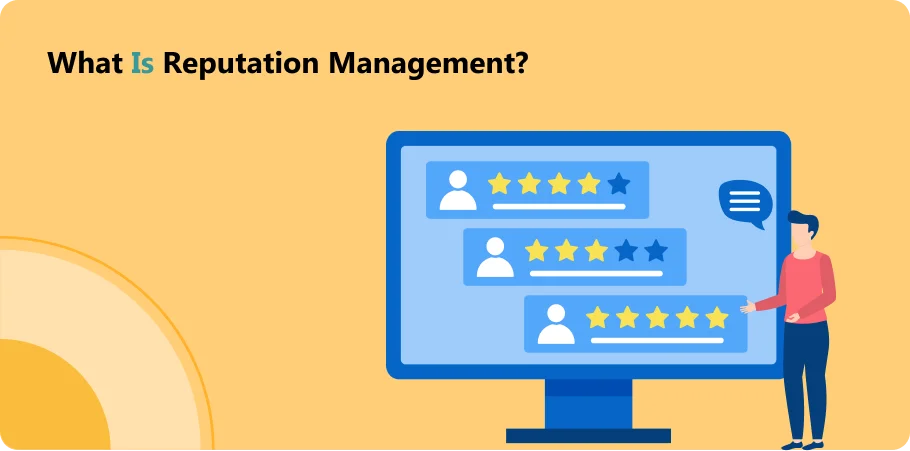
The process of molding public opinion about an individual or company is known as reputation management. It involves monitoring what is said about a brand online and taking steps to shape that perception. The main components of reputation management include:
- Monitoring: Tracking comments made about your brand on review sites, social media, and various online platforms.
- Responding: Addressing positive and negative feedback to show that you care about your customers’ opinions.
- Promoting: Highlighting positive reviews and stories to boost your brand’s online reputation.
Reputation management is vital for both businesses and personal branding. For businesses, it helps build customer trust and can lead to more sales. A strong brand reputation can give a company a competitive advantage. For individuals, managing their reputation can open up career opportunities and help them stand out in their field.
The Impact of Online Reputation
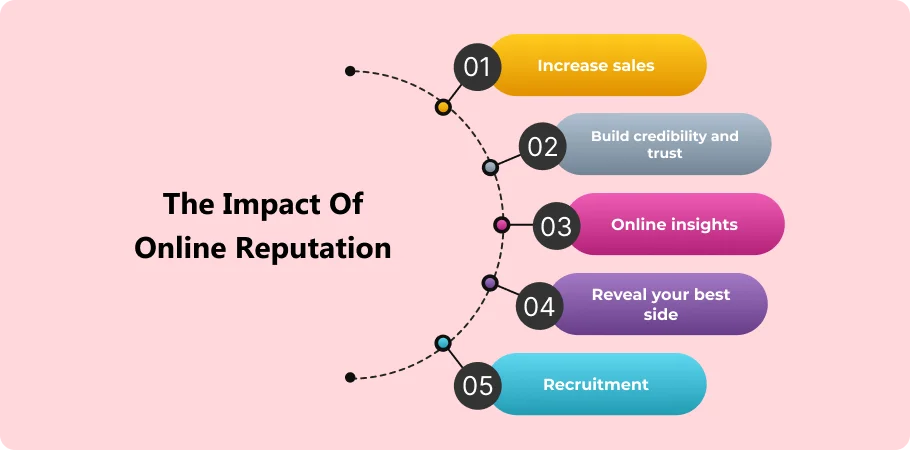
Your online reputation is incredibly important in the digital age. Individuals frequently do internet research about companies and people before making decisions. Hence, the results they encounter via their search may greatly impact their selections.
For instance, a poll revealed that 85% of buyers place equal faith in personal recommendations and internet evaluations. This shows how crucial it is to maintain a positive image online. According to another study, up to 22% of potential clients might be lost by a firm due to a single unfavorable review.
Brand reputation management is especially important for local businesses. A small business with a strong local presence can attract more customers with good reviews and a positive image. On the other hand, a few negative reviews can significantly hurt a local business.
Big companies are also affected by their brand perception online. For example, a large retailer might lose millions in sales if a viral social media post damages its brand reputation. Monitoring industry trends and consumer opinions can yield valuable insight into preserving brand safety.
In summary, online reputation management is essential for both businesses and individuals. By monitoring your brand’s online reputation, you can guarantee a good brand reputation and sustain a favorable relationship with your target audience. In a world that is becoming increasingly digital, this will help you maintain your competitiveness and safeguard your brand.
Reputation Management Tips

Proactive vs. Reactive Management
Reputation management is inclusive of both proactive and reactive strategies.
Proactive management means maintaining a positive brand reputation before any issues arise. This includes:
- Regular Content Updates: Consistently updating your website and social media profiles with fresh, engaging content helps keep your audience informed and interested. For example, a blog post on industry trends or a new product announcement can enhance your social media presence.
- Engaging with Customers: Regularly interact with your audience on social media. Respond to comments, answer questions, and show appreciation for positive feedback. This builds a loyal community and strengthens your brand’s image.
- SEO Optimization: Ensure your website is optimized for search engines. This helps positive content about your brand appear higher in search results, pushing down any negative content.
Reactive management involves responding to issues as they arise.
If someone writes a bad review, be prompt and kind in your response. Offer to fix the problem and extend your apology if needed. This can lessen the harmful effects of criticism by demonstrating your concern for the client’s happiness.
A strong reputation management strategy combines both proactive and reactive measures. This balanced approach ensures you are prepared to handle any situation.
Consistent Monitoring
Consistent monitoring is crucial for an effective reputation management strategy. Regularly check what people say about your brand online, including reviews, social media mentions, and news articles.
Importance of Regular Monitoring:
- Immediate Response: You may quickly respond to excellent and negative criticism by watching internet remarks frequently. This demonstrates to your clients that you appreciate their feedback and that you are dedicated to providing top-notch service.
- Sentiment Analysis: Understanding the overall sentiment towards your brand helps you gauge public perception. Positive sentiments indicate that your reputation management efforts are effective, while negative sentiments signal areas for improvement.
- Crisis Management Plan: Early detection of negative trends allows you to implement your crisis management plan promptly, minimizing potential damage to your brand.
Tools and Techniques:

- CrmOne is one of the top tools for monitoring online mentions and reviews. It offers comprehensive features like sentiment analysis, real-time alerts, and detailed reports. CrmOne also provides competitive analysis and market research insights, helping you stay ahead of competitors.
- Google Alert Create alerts for relevant keywords and your brand name. This free tool from Google notifies you whenever your brand is mentioned online.
- Hootsuite helps manage and monitor your social media presence. It allows you to track mentions, schedule posts, and analyze engagement metrics.
By using these tools and maintaining a consistent monitoring routine, you can effectively manage your brand’s reputation. This ensures that your reputation management efforts are always on track and that you maintain a positive brand reputation.
Book a CrmOne Demo
Experience the CrmOne simplicity and power. Our experts will show you the best ways to use it and answer your questions in real time. See how CRMOne fits your needs.
Developing a Reputation Management Strategy

Setting Clear Objectives
Having clear goals is essential for effective reputation management. Clear objectives help you focus your efforts and measure your success. Here are some common objectives:
Improving Customer Satisfaction: Ensure customers are happy with your products or services. Satisfied customers are likelier to leave positive reviews and recommend your brand to others.
Enhancing Customer Experience: Make every interaction with your brand pleasant and memorable. This can involve improving customer service, streamlining purchase processes, or offering high-quality products.
Building Brand Awareness: Increase your brand’s visibility. Use reputation management techniques like social media campaigns and content marketing to reach a wider audience.
Identifying Key Platforms

It’s important to know where your audience spends their time online. Different platforms can influence your reputation management in various ways.
Review Sites: Sites like Yelp, Google Reviews, and TripAdvisor are crucial. Numerous buyers research products online before deciding what to buy. Make sure your company is active on these channels.
Social Media: Platforms like Facebook, Twitter, and Instagram are vital for an active social media presence. Here, you can engage directly with customers and address their concerns.
Industry-Specific Forums: Join forums and online communities related to your industry. These networks may give you valuable insights and facilitate communication with your target audience.
Engaging with Your Audience
Active engagement with your audience is key to maintaining a positive reputation. Here are some tips:
Respond Promptly: Consumers expect brands to respond quickly to inquiries and complaints. Whether it’s a question on social media or a review on a website, timely responses show that you care.
Communicate Effectively: Be clear, polite, and helpful in all your communications. This helps build trust and positive relationships with your customers.
Build Relationships: Engage with your customers regularly. Thank them for positive feedback and address any concerns they may have. Happy customers are more likely to become loyal advocates for your brand.
Monitor Online Conversations: Monitor what people are saying about your brand online. Join the conversation where appropriate and provide helpful information or assistance.
Encourage Employee Feedback: Your employees can offer insights into customer interactions and suggest ways to improve the customer experience.
You can develop a strong reputation management strategy by setting clear objectives, identifying key platforms, and actively engaging with your audience. This will help ensure happy customers and your brand maintains a positive image online.
Advanced Tactics for Reputation Management
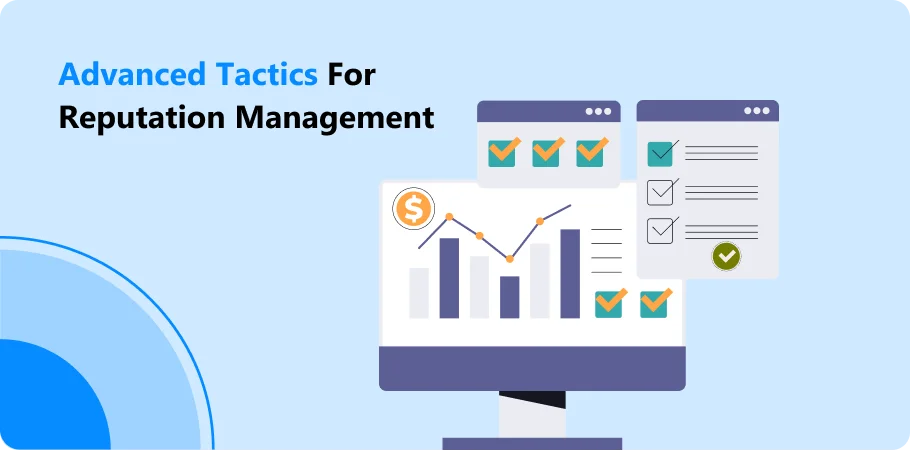
Using SEO for Reputation Management
SEO plays a significant role in brand reputation management by managing what people see when they search for your brand. Here are some tips on how to use SEO to highlight positive information:
- Optimize Positive Content: Ensure that positive reviews, testimonials, and news articles about your brand appear at the top of search results. Use relevant keywords and high-quality content to boost their ranking.
- Create Fresh Content: Regularly update your website and blog with new, positive content. This helps to push down any negative information in search results.
- Build Backlinks: Obtain links from reputable websites to your positive content. This will increase website traffic and search engine ranking.
Social Media Monitoring Tools
Monitoring your social media presence is essential for effective reputation management. Here are some tools that can help:
CrmOne is a top-notch reputation management software. It offers real-time alerts, sentiment analysis, and detailed reports. It helps you track and respond to online mentions quickly. This further ensures that your brand reputation management efforts are always up to date.
Hootsuite allows you to control several social media profiles from one dashboard. It allows you to plan posts, track mentions, and examine performance indicators.
Sprout Social tool provides comprehensive social media analytics and monitoring. It helps you track keywords, hashtags, and brand mentions across various platforms.
These tools can help you maintain a positive social media presence and respond promptly to any issues.
Crisis Management Plans

Having a crisis management plan is crucial for handling reputation crises effectively. Here’s how to create and implement one:
- Identify Potential Risks: Think about what could go wrong. This could include negative reviews, social media backlash, or product recalls.
- Create a Response Team: Assemble a team responsible for handling crises. This team should include members from PR, customer service, and management.
- Develop Communication Strategies: Plan how you will communicate during a crisis. This includes drafting templates for public statements and internal memos.
- Monitor Continuously: Monitor review requests, social media mentions, and news articles. Use review management tools to track what is being said about your brand.
- Respond Quickly: Address the issue promptly. Apologize if necessary, and provide a clear plan for resolving the problem.
- Evaluate and Improve: After the crisis, review your response and identify areas for improvement. Reputation management is a continuous effort.
You can better control your online reputation and influence perception using these advanced tactics. SEO helps highlight positive information, social media monitoring tools keep you informed, and a solid crisis management plan prepares you for any challenges. This comprehensive approach ensures your brand remains strong and trusted, even in difficult times.
Best Practices for Sustained Success

Continuous Improvement
Maintaining a good reputation is not a one-time task. It requires continuous improvement. Here are some practices to ensure ongoing success in brand reputation management:
- Regular Feedback: Continuously seek feedback from your customers. Use surveys, social media polls, and direct communication to understand their needs and concerns. This helps you make necessary adjustments to improve the customer experience.
- Monitor Trends: Monitor industry trends and adapt your strategies accordingly. Stay updated with the latest reputation management strategies to stay ahead of the competition.
- Update Content: Regularly update your website, blog, and social media with fresh content. This keeps your audience engaged and helps maintain a positive professional image.
These practices ensure that you always work towards improving your reputation, leading to satisfied customers and increased customer loyalty.
Training and Empowering Employees
Employees play a crucial role in brand reputation management. They interact with customers daily and can significantly influence your brand’s perception. Here’s how to train and empower your employees:
- Training Programs: Conduct regular training sessions on customer service, brand tone, and online reputation management. Teach your employees to handle complaints, respond to reviews, and maintain a positive attitude.
- Empowerment Strategies: Encourage employees to take initiative and solve problems independently. Give them the freedom to choose what’s best for the consumer. This builds their confidence and improves the customer experience.
- Recognition and Rewards: Recognize and reward employees who go above and beyond to maintain your brand’s reputation. This motivates them to continue their efforts.
By training and empowering your employees, you can ensure that they contribute positively to your brand reputation.
Legal and Ethical Considerations
Adhering to legal and ethical standards is essential for brand reputation management. Here’s why it matters and how to avoid common pitfalls:
- Honesty and Transparency: Always be honest with your customers. Misleading information can damage your reputation. Be open and honest about your policies, services, and products.
- Privacy Protection: Respect your customers’ privacy. Do not misuse or share their personal information without consent. This is crucial for maintaining trust and a positive reputation.
- Avoiding False Reviews: Never post fake reviews or pay for positive reviews. This is unethical and can lead to legal issues. Encourage genuine feedback from your satisfied customers.
- Compliance: Make sure your company abides by all applicable laws and rules. This includes advertising standards, consumer protection laws, and data privacy regulations.
By following these legal and ethical guidelines, you can avoid damaging your reputation and build a strong, trustworthy brand.
In conclusion, continuous improvement, training and empowering employees, and adhering to legal and ethical considerations are vital for successful reputation management. These practices help you maintain a positive brand reputation, ensure customer loyalty, and uphold a professional image in the eyes of your local businesses and broader target audience.
Conclusion
This blog covered essential aspects of reputation management to help you build and maintain a positive brand image. We began by understanding the importance of managing your reputation and how a positive reputation enhances trust and credibility, while a poor one can have significant negative impacts.
In conclusion, effective reputation management is an ongoing process that requires strategic planning and dedication. By following the tips and strategies discussed, you can ensure that your brand remains strong and positive. Addressing customer concerns, seeking employee feedback, and engaging in brand advocacy are all steps toward building a trusted brand. Implement these practices to enhance your brand visibility and foster loyal customers.
Get started for Free
Start for free today. Boost your sales by clicking the Get Started button. With CRMOne, you can manage leads, sales, and customer service all in one place.
